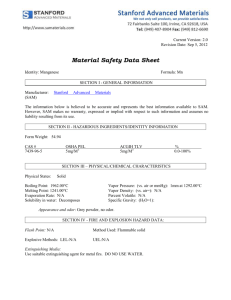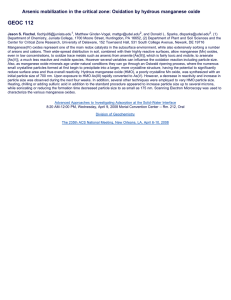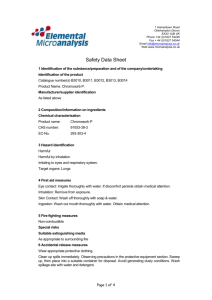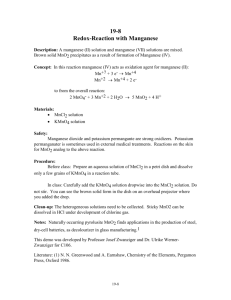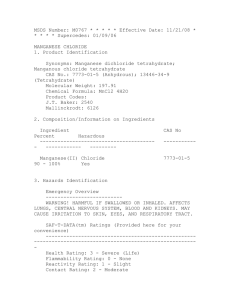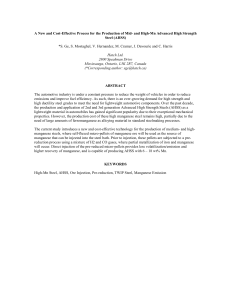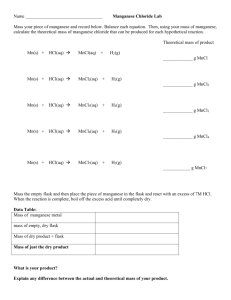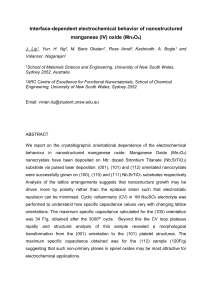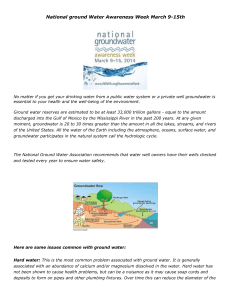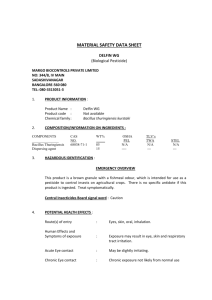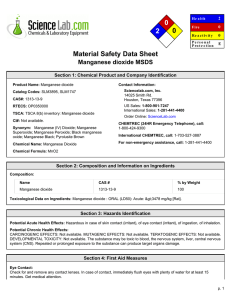Case Study 4 MSDS Information For Manganese Ore
advertisement
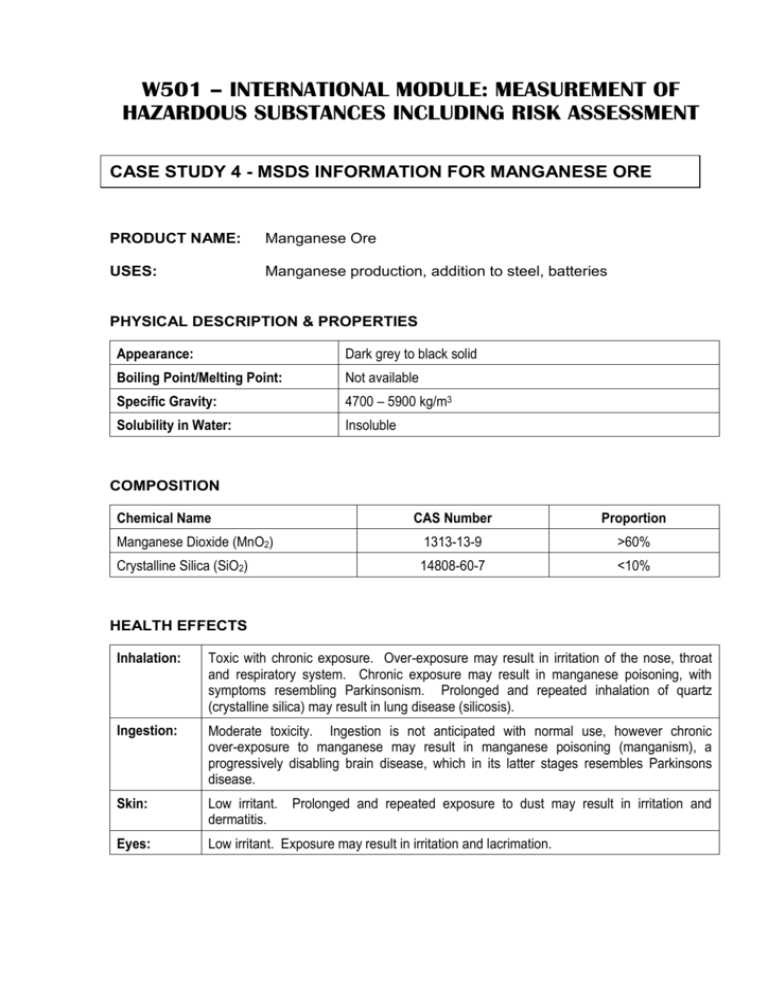
W501 – INTERNATIONAL MODULE: MEASUREMENT OF HAZARDOUS SUBSTANCES INCLUDING RISK ASSESSMENT CASE STUDY 4 - MSDS INFORMATION FOR MANGANESE ORE PRODUCT NAME: Manganese Ore USES: Manganese production, addition to steel, batteries PHYSICAL DESCRIPTION & PROPERTIES Appearance: Dark grey to black solid Boiling Point/Melting Point: Not available Specific Gravity: 4700 – 5900 kg/m3 Solubility in Water: Insoluble COMPOSITION Chemical Name CAS Number Proportion Manganese Dioxide (MnO2) 1313-13-9 >60% Crystalline Silica (SiO2) 14808-60-7 <10% HEALTH EFFECTS Inhalation: Toxic with chronic exposure. Over-exposure may result in irritation of the nose, throat and respiratory system. Chronic exposure may result in manganese poisoning, with symptoms resembling Parkinsonism. Prolonged and repeated inhalation of quartz (crystalline silica) may result in lung disease (silicosis). Ingestion: Moderate toxicity. Ingestion is not anticipated with normal use, however chronic over-exposure to manganese may result in manganese poisoning (manganism), a progressively disabling brain disease, which in its latter stages resembles Parkinsons disease. Skin: Low irritant. Prolonged and repeated exposure to dust may result in irritation and dermatitis. Eyes: Low irritant. Exposure may result in irritation and lacrimation. 2. PRECAUTIONS FOR USE EXPOSURE STANDARDS Manganese Dioxide = 1 mg/m3 as Mn Crystalline Silica = 0.1 mg/m3 MANUFACTURERS’ RECOMMENDATIONS Use safe work practices to avoid dust inhalation. Chronic over-exposure to manganese dust at high levels may result in manganese poisoning (manganism); a progressively disabling brain disease, which in its latter stages resembles Parkinsons disease. Crystalline quartz is classified as carcinogenic to humans (IARC Group 1). Chronic exposure may cause lung fibrosis (silicosis). ENGINEERING CONTROLS Do not inhale dust/powder. Use with adequate natural ventilation. Where a dust inhalation hazard exists, mechanical extraction ventilation is recommended. Maintain dust levels below the recommended exposure standard. PERSONAL PROTECTION Skin: In areas of heavy contamination wear gloves and disposable overalls. Eyes: Use dustproof goggles. Respiratory: Where exposures exceed the exposure standard wear a P1 (particulate) respirator. Where exposures are excessive wear a P2 (particulate) respirator or an air-supplied respirator. Flammability: Not flammable. Hazardous Decomposition Product: May evolve toxic gases when heated to decomposition. 3. SAFE HANDLING INFORMATION Before use, carefully read the product label. Use of safe work practices are recommended to avoid eye or skin contact and inhalation. Observe good personal hygiene, including washing hands before eating. Prohibit eating, drinking and smoking in contaminated areas (eg if container is damaged). Store in cool, dry, well ventilated area, removed from organics, oxidising agents, hydrogen sulphide, heat sources and foodstuffs. Ensure containers are adequately labelled, protected from physical damage and sealed when not in use. Note: This MSDS has been specially prepared for use in this Case Study and is not to be used for any other purpose.
